The production of 149 units of the McLaren Elva pays tribute… to Elva (the company that made the client versions of the 60s racing McLarens) and reminds us of Elvis Presley, who drew gasps at the cinema (also) behind the wheel of one of those Mclaren Elva M1A in the 1966 movie Spinout! .
And it's that celebrity look of the king of rock'n'roll that you can borrow when you drive this €1.7 million car in the glamorous Principality of Monaco.
Who does not feel nostalgic seeing the images, in black and white, of the times when car drivers pursued their dreams in rudimentary construction vehicles, lacking the most basic safety elements, a value that succumbed to the horizon of glory. Not that risking their lives in a more or less vain way is something to be commended, but for what we recognize as romantic in the heroic instinct that made each of them always risk much more than common sense would advise.
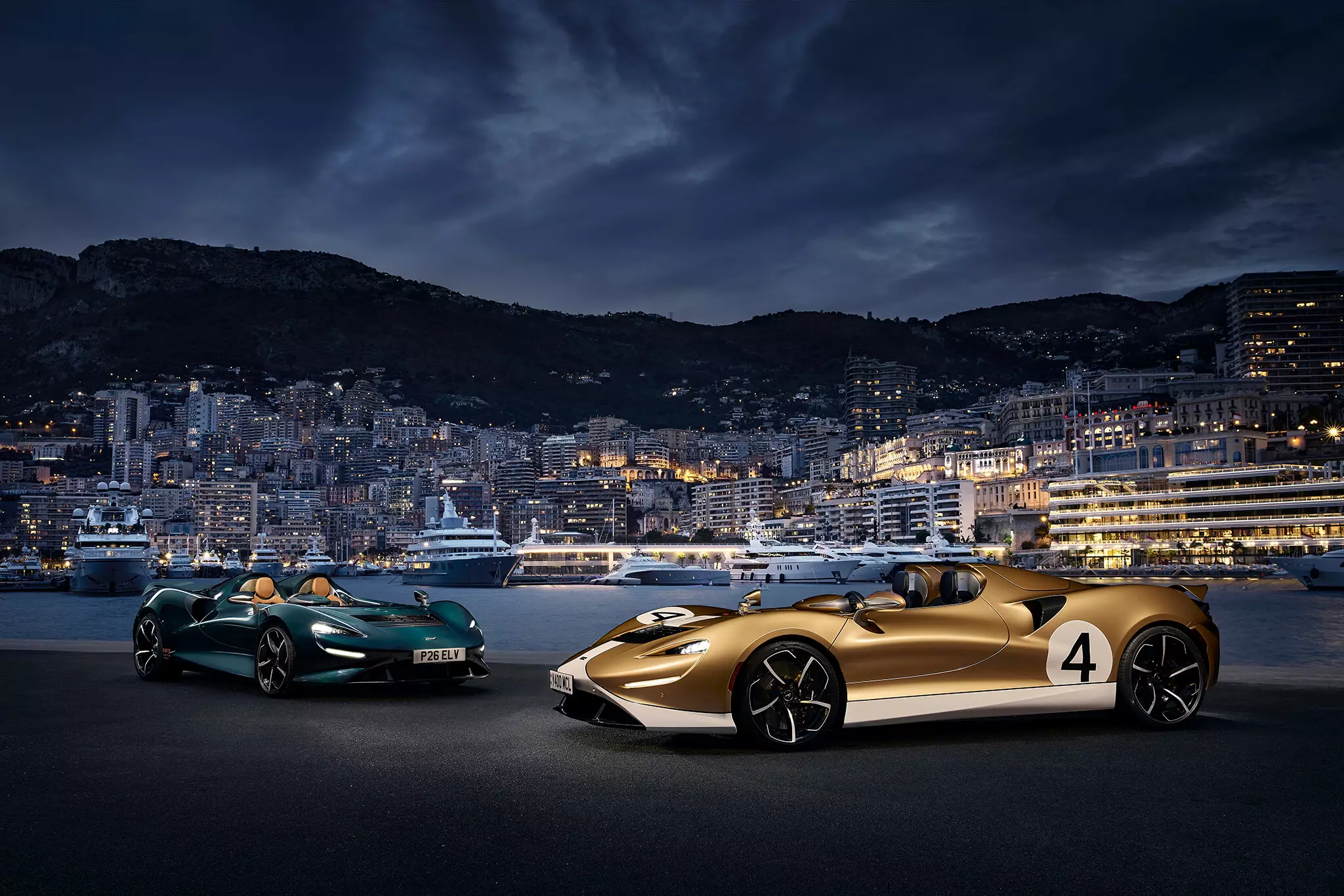
After Bruce McLaren started to make waves in motor racing with his M1A, in the early 60's, the first orders for road versions started to appear, even more with the publicity that the model had in the movie Spinout! in which Elvis Presley, between two rock ballads, was snatching victories on the asphalt and female hearts with the same accelerated cadence.
As McLaren's competition team did not have more than half a dozen elements or an industrial infrastructure, the solution was to order the execution of these versions for private customers from the small English manufacturer Elva Cars, which, by hand, dedicated itself to assembling 24 units that quickly found an owner.
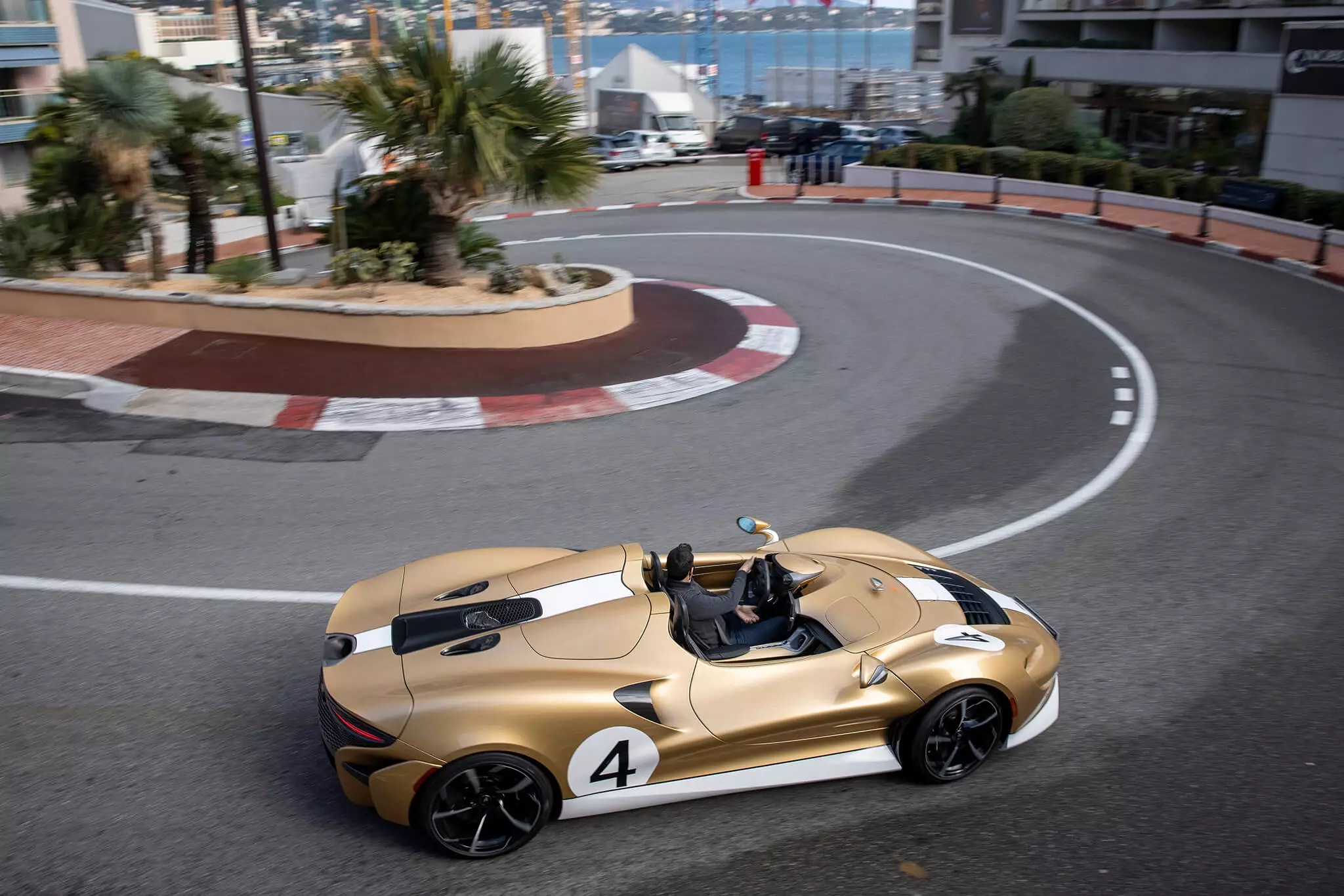
815 hp, 0-100 km/h in 2.8s, 327 km/h
We take a leap in 56 years and in 2021 McLaren Automotive begins delivering to 149 customers around the world the reincarnation of this model, aptly named Elva which, like the original, is devoid of windshields, side windows or roof and that preserves the general principles of its ancestor.
Starting with featherweight thanks, above all, to a construction made entirely of carbon fiber (some of which is viscerally exposed) and which allows it to bear the title of lightest road McLaren ever.
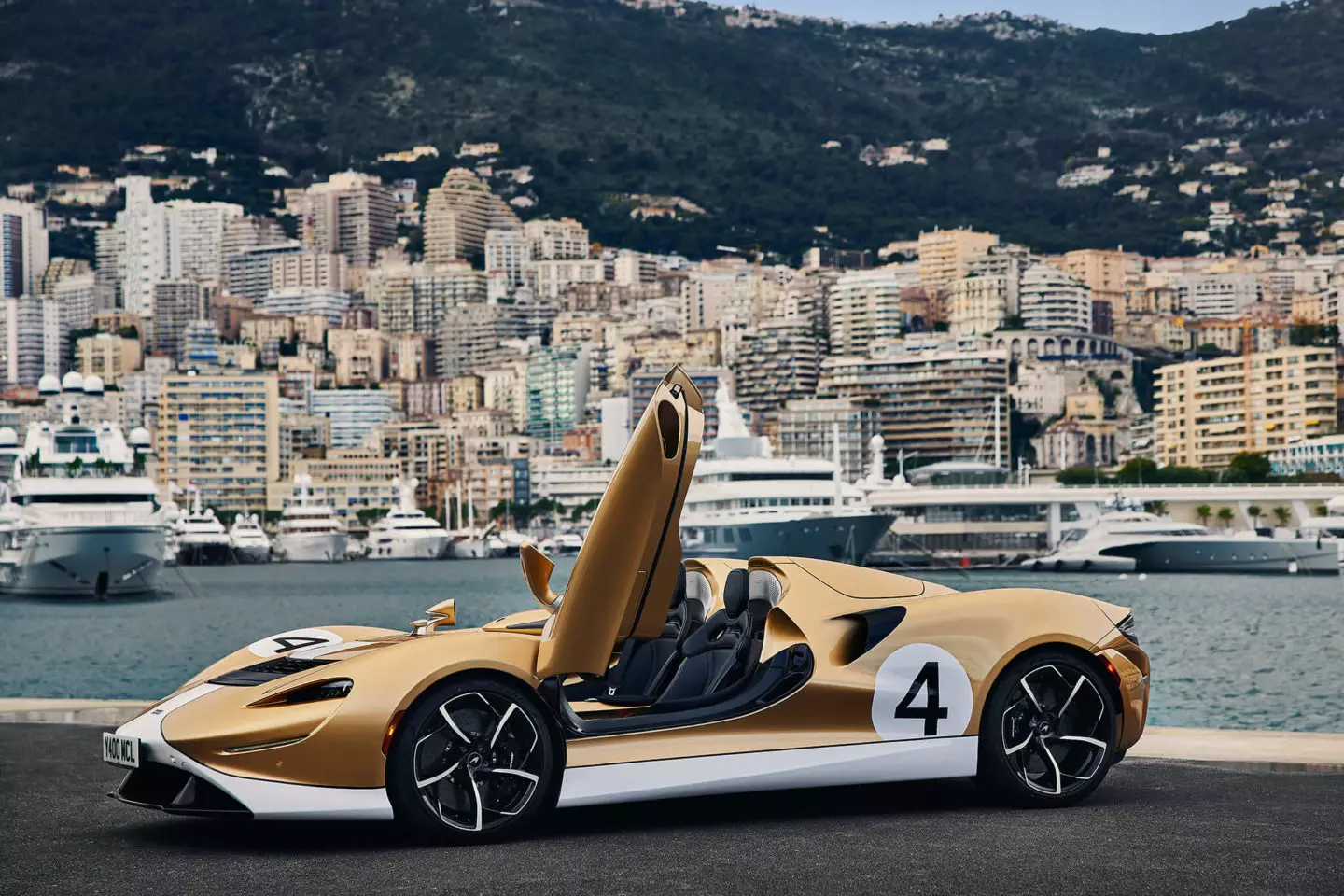
But also with the mid-engine configuration and superlative performance levels, also because it is brimming with power – 815 hp and 800 Nm, even more than in the version of this V8 mounted on the Senna – which, in conspiracy with its meager 1148 kg ( on no-load) allows performances from another world, such as the 0 to 100 km/h in 2.8s (or 0-200 km/h in 6.8s) or the 327 km/h of top speed attest.
There will only be 149 units
These are the numbers of an elite McLaren, which is part of the British brand's Ultimate Series lineage, which is only the fifth element after F1 (1994, 106 units in total), P1 (2013, 375 units), from Senna (2018, 500) and the Speedtail (2020, 106).
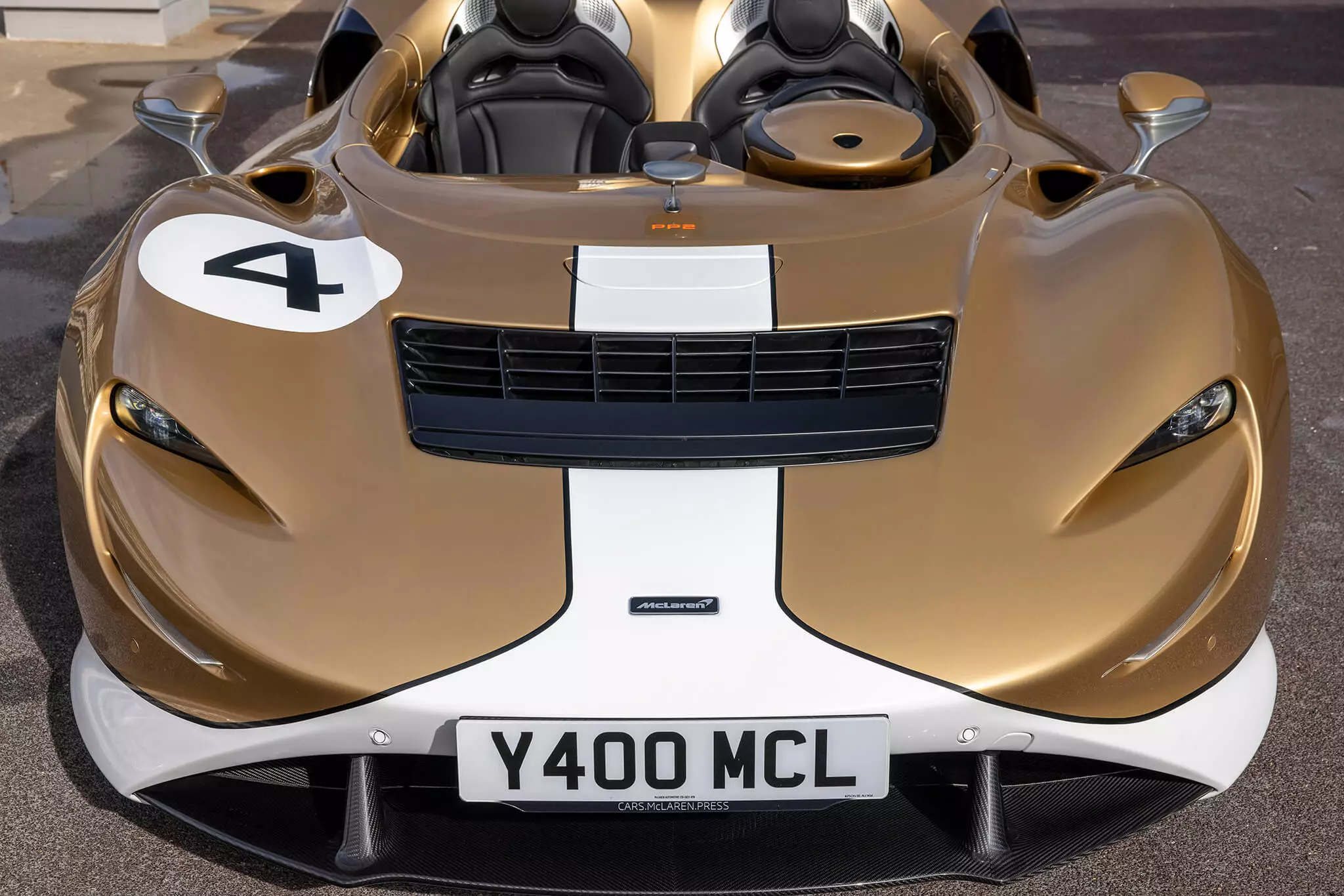
Initially McLaren had planned to manufacture 399 Elva units, but the pandemic devastated the plans and finances of the English brand (which had a drop of more than 60% in sales in 2020, leading to redundancies, sale of participation in the sports division and a mortgage on the premises of the company's headquarters in Woking) and this number was readjusted to 149.
Also because high investments are being made in the electrification of the engines, which will absorb a large part of the research and development funds in the coming years, as Mike Flewitt, its CEO, admits:
Mike Flewitt, CEO of McLaren“We won't make any more Ultimate Series models until at least the second half of the decade, after this period where we've released three in a short time and I think by 2026 all our models will be hybrids, even if the first McLaren 100 % electrical should only be a reality in 2028-9"

Air, sounds, emotions… all unfiltered
For this dynamic experience with the Elva, no place is more appropriate than Monaco, where Bruce McLaren ignited passions behind the wheel of his M1A, at least as the starting and ending point of a journey through the mountains of the French Riviera.
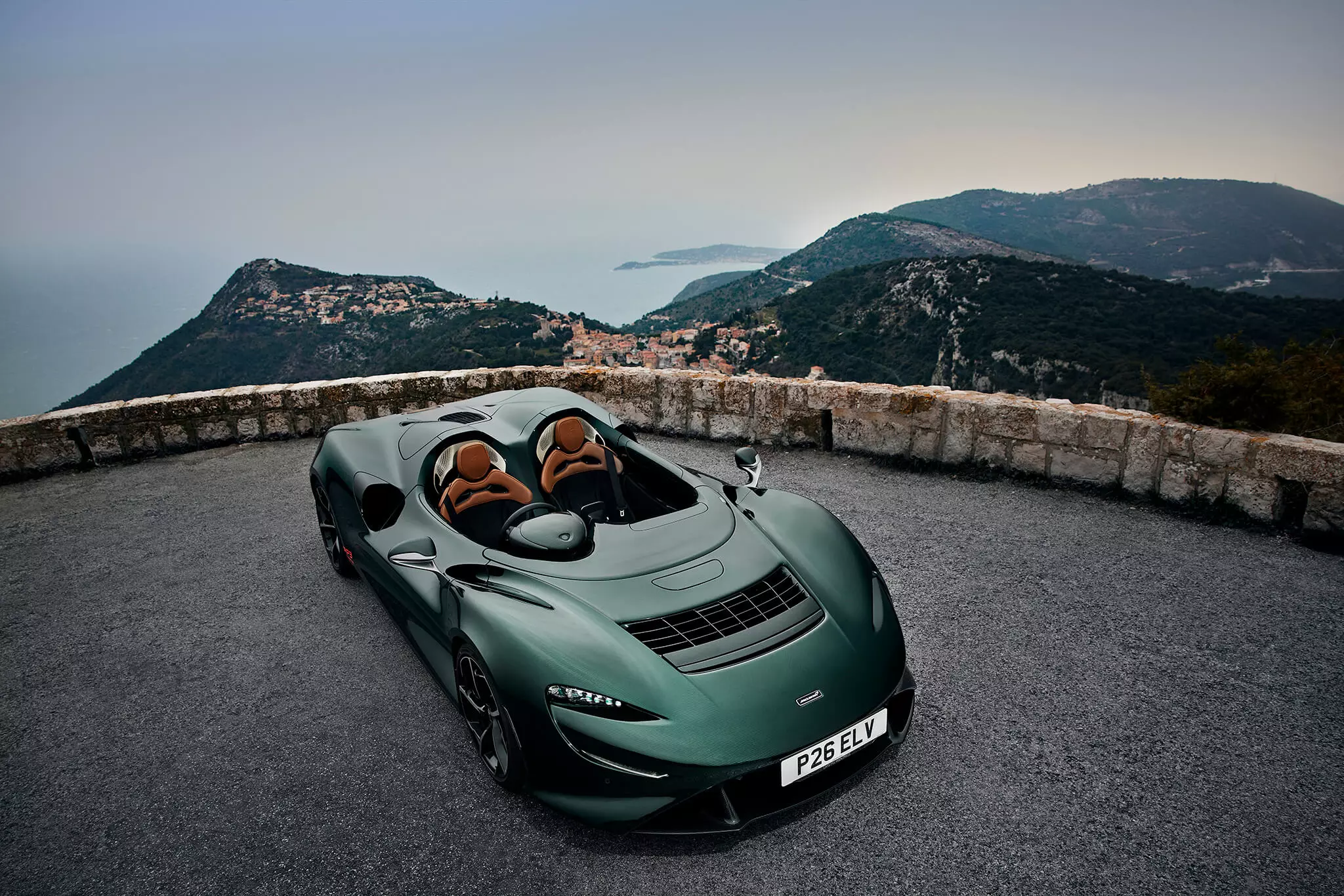
After the whirlwind of emotions generated by his majestic garment, made with just three huge panels — which can almost be defined as sculptures — the sides measuring three meters in length, the first surprise comes as soon as you get into the car.
After opening the dihedral opening doors, as is traditional in the house, and standing up so that it is possible to lower the body with the help of the steering wheel rim, the adjustment of the seat position no longer follows the traditional pattern by vectors ( up, down, forward, backward), before allowing you to reach the desired position with just one movement (if the seat goes down, the back reclines a little).
The bacquets with carbon fiber structure and integrated headrests (within which the loudspeakers for each of the occupants are installed) are covered with a type of material with four layers to eliminate moisture and not heat up, which is important in a fully open car (alternatively there is an aniline skin with a protective layer).
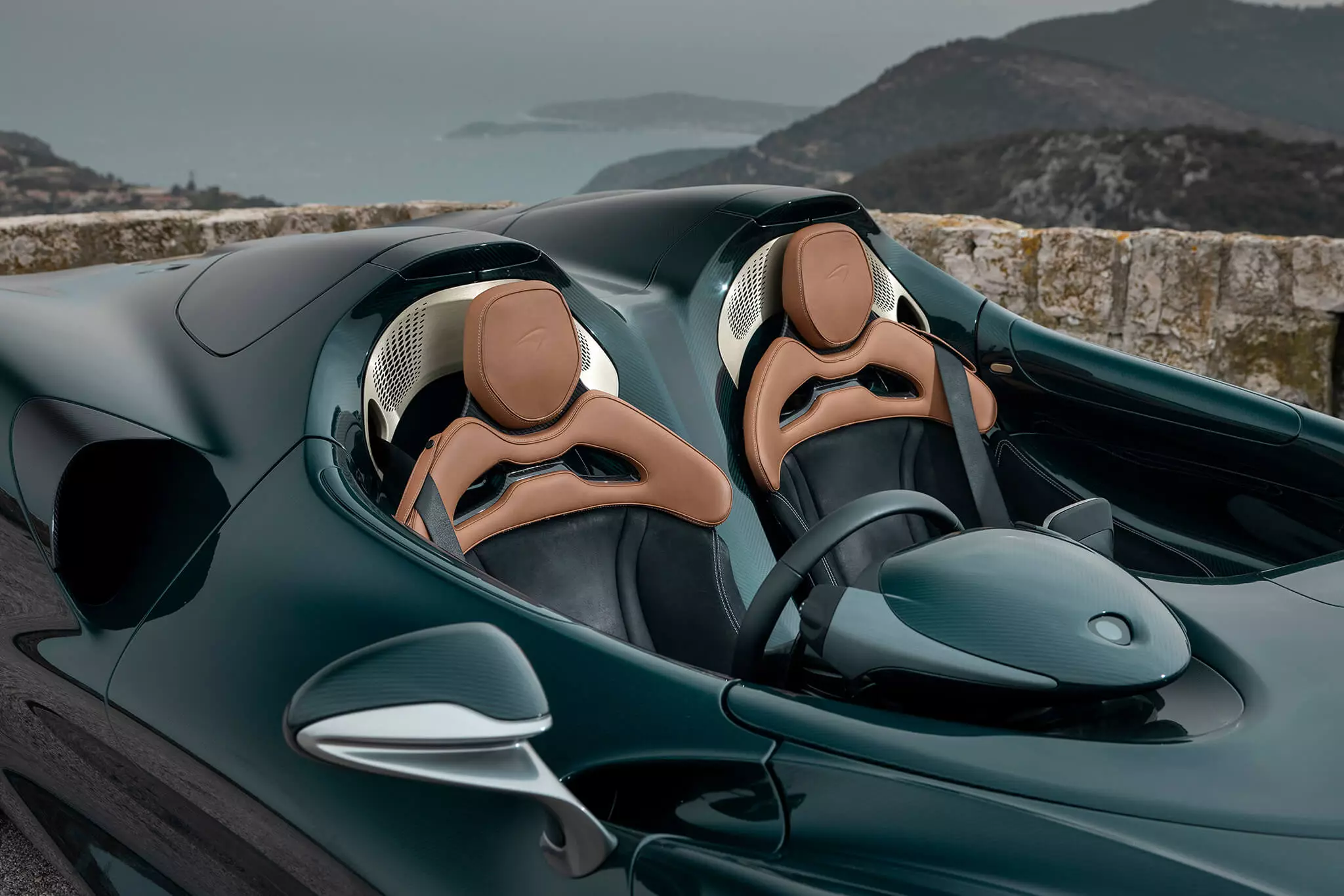
The seats are shorter than normal to allow occupants to put their feet forward when getting in and out of the car, and behind the back are shields that trigger vertically to protect the occupants' heads when an imminent rollover situation occurs .
In front of the driver is the digital instrumentation, which moves with the steering column when we decide to adjust its height, and its information is complemented by the 8” central touchscreen (fixed to a carbon fiber support, of course), which contains all the complementary data as well as a multitude of applications, with data from track telemetry, reversing camera, navigation map, etc (allowing also to define one of 15 slip tolerance levels).
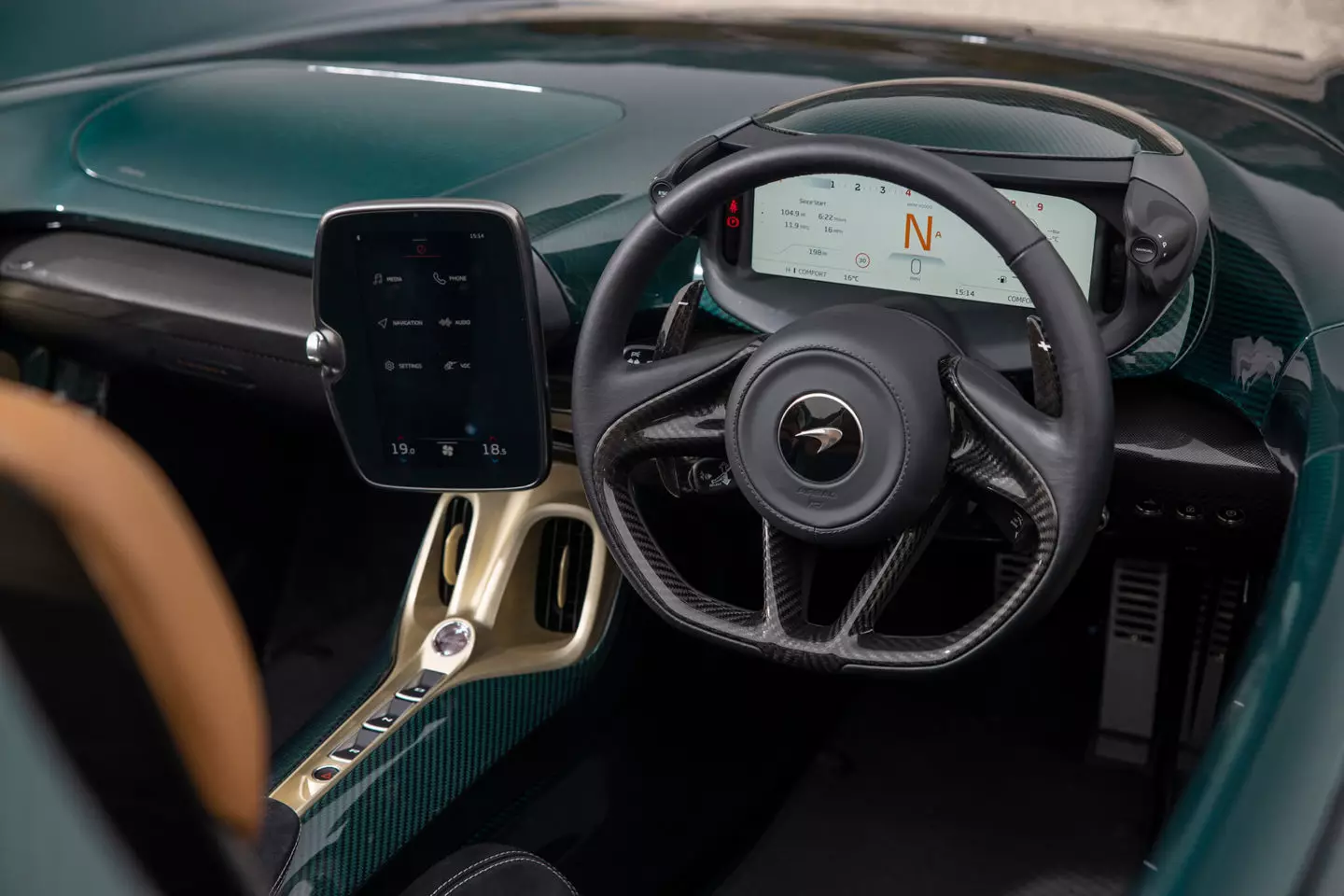
One of the helmets can be stored/attached to the passenger's feet, the other under the body cover behind the passenger compartment, but in that case the scant 50 liters of the only thing that palely looks like a trunk in this car disappears.
This lid ends at the engine and then at the huge rear diffuser, along with the extensive mesh panel through which the engine's heat escapes and the four exhaust outlets (two facing upwards and another two facing backwards) and an active rear air deflector.
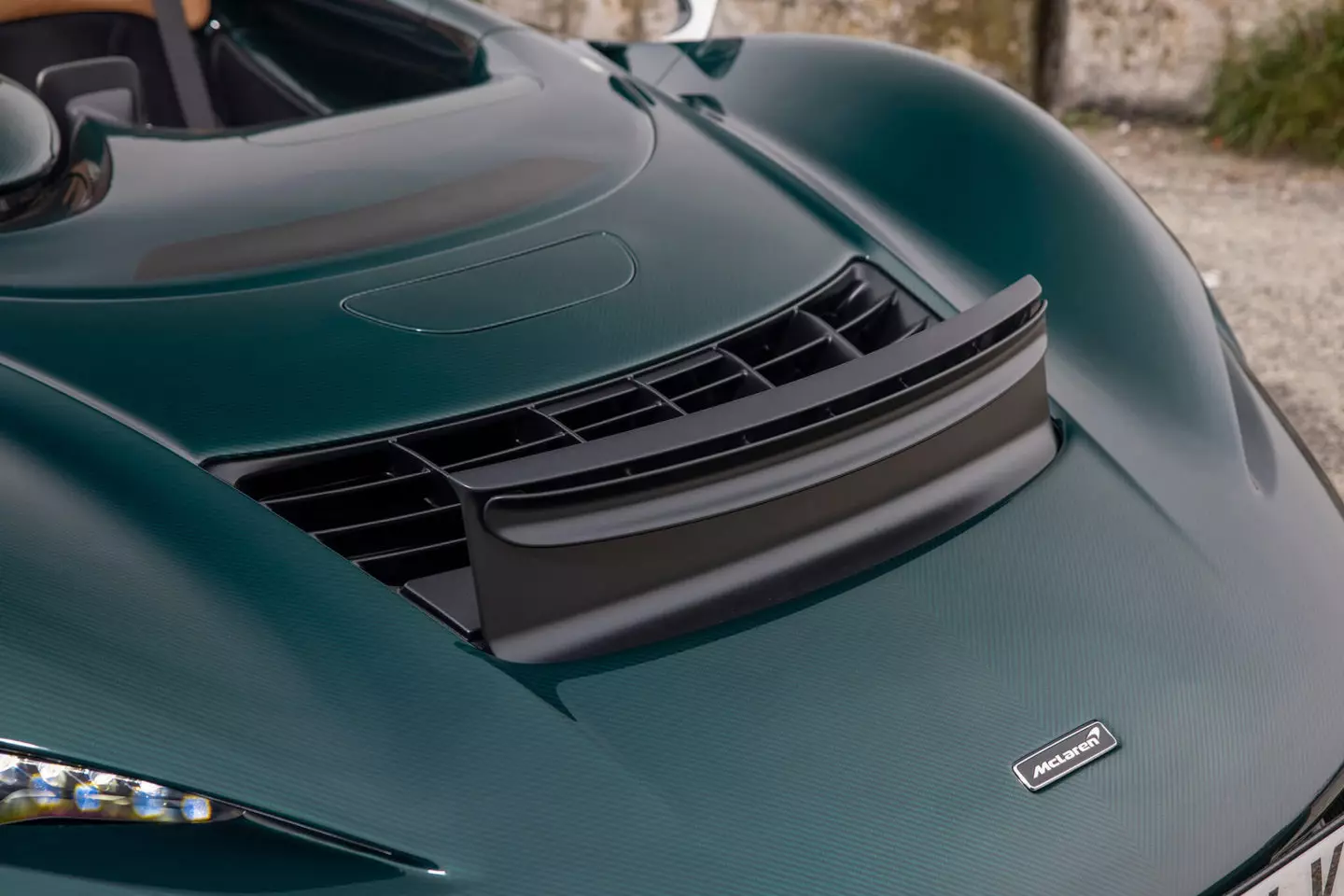
This, as in other McLaren, varies its height and angle to act as an air brake in very strong speed reductions and, here, having the additional function of compensating changes generated in the front of the Elva due to the lifting of the deflector of the AAMS system. (Active Air Management System), which serves to divert air from the cockpit, as we will see later, to ensure the car's aerodynamic balance.
At the touch of the ignition button, the V8 reacts with an initiatory roar and gathers attention in the first kilometers in the heart of the Principality, not so much for the sound it produces (engines with many cylinders is not lacking in these parts), but rather for its silhouette disconcerting from Elva.
In the city, it is easier to enjoy contact with the elements and unobstructed vision, which can even be done without major embarrassment caused by comments from reserved and distant Monegasques who prefer to look out of the corner of their eye or after the car passes by, but in other places of the Elva's exuberance in the world may arouse the envy of others and possible comments that are too audible due to the absence of filters. The same one that makes all suspension movements and the inspiration/expiration of the car's respiratory system heard in all detail.
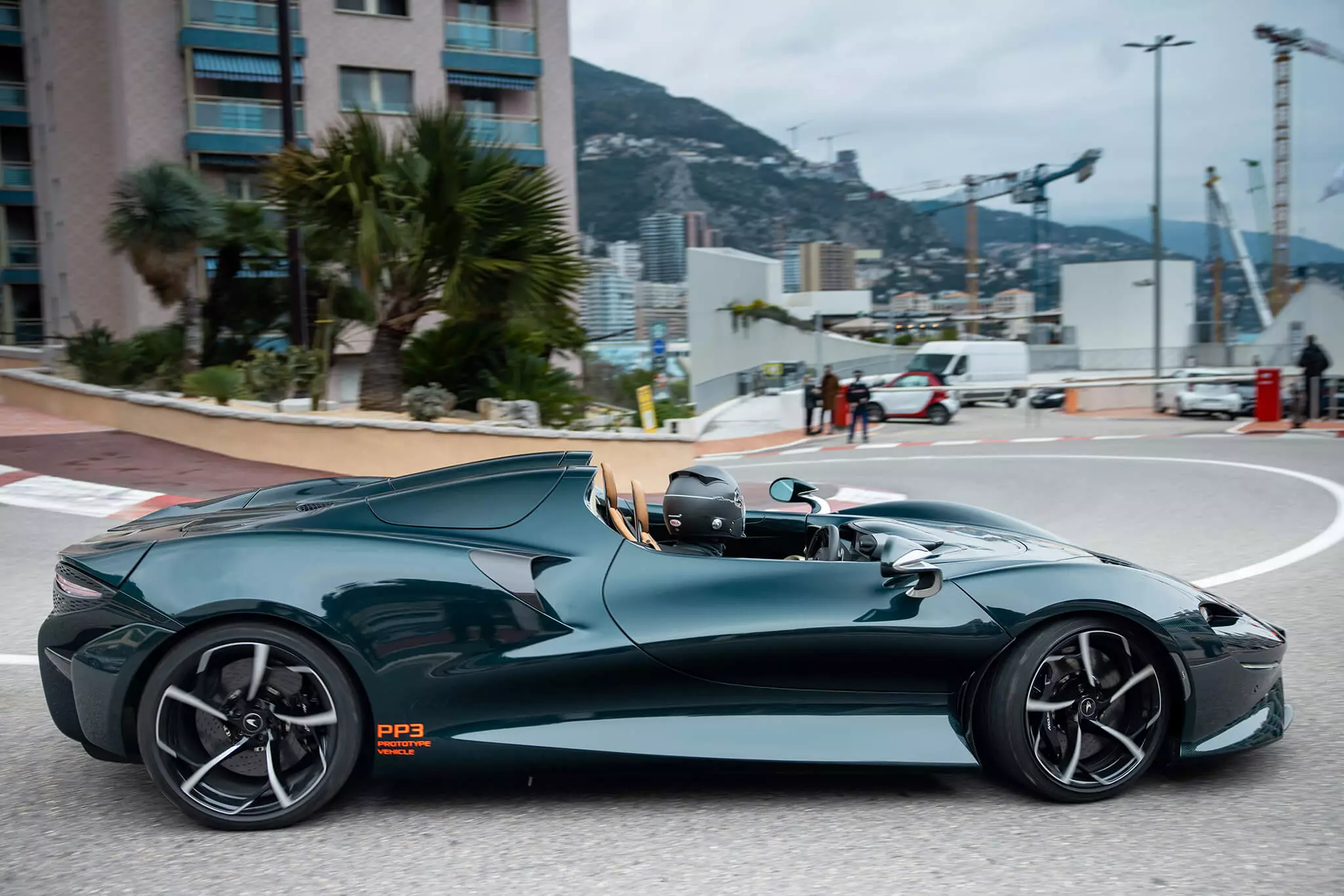
Buttons change place
In the frame of the digital instrumentation are placed the two controls (for the Behavior on the left and for the Engine on the right) to define the “state of mind” of the Elva — in the previous McLaren they were always on the console between the two banks — in three different programs , Comfort, Sport and Track.
In cities — where, without wind protection, you can only run up to 50 km/h before the eyes start to cry out in unbridled tears — the more moderate of the three is indicated for ensuring a level of damping that spares the occupants' bones from impacts excessive, while keeping the “soundtrack” in a civilized register. The suspension, incidentally, is the same as the Senna (also here bolted to the carbon monocoque) which can be defined as a hydraulic multimode system that achieves a sufficiently broad spectrum of damping types.
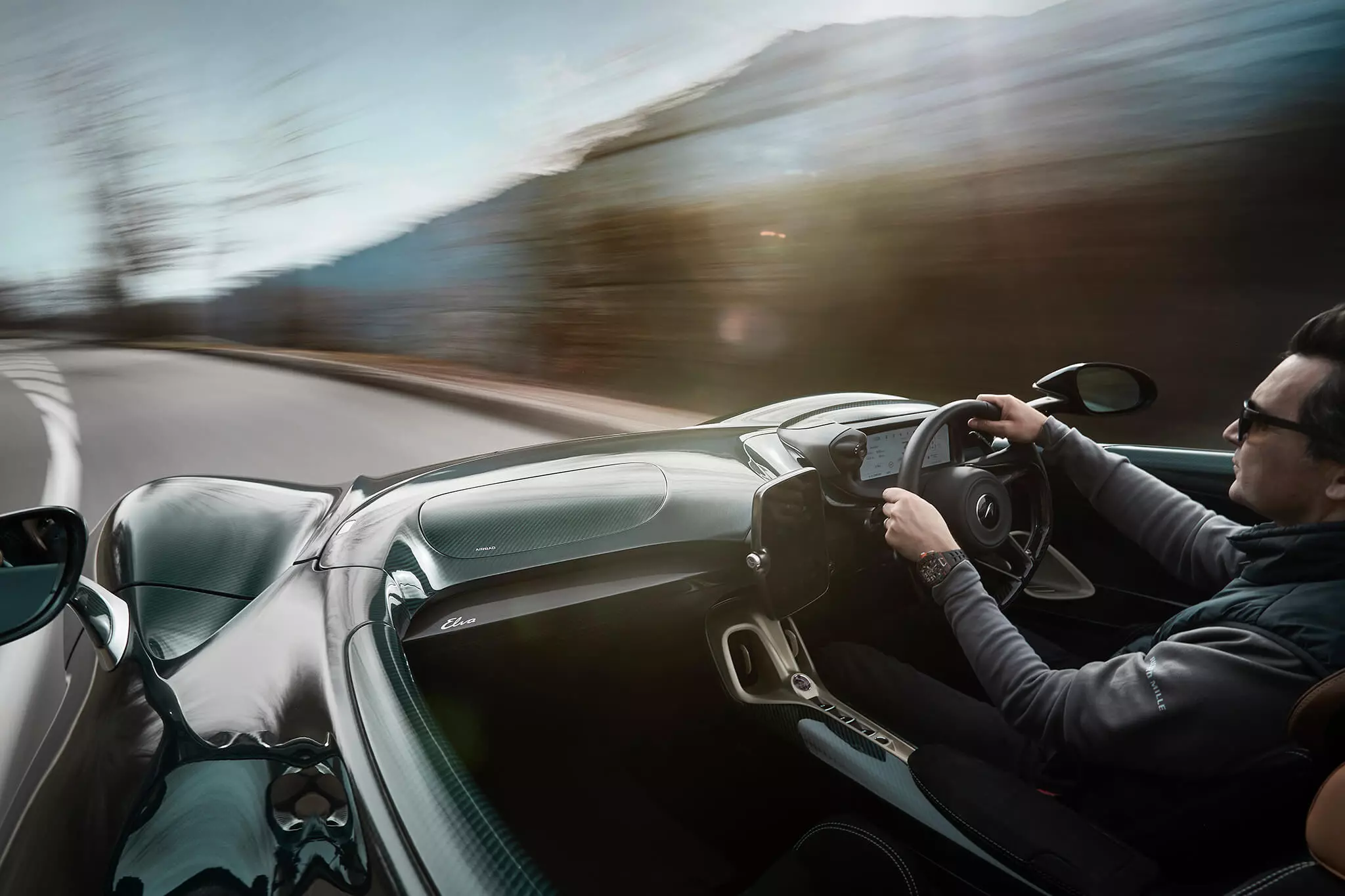
A few minutes later we are already on the access to the sensational zigzag Corniches that “overfly” Monaco and take us to some of the mythical asphalts of the Monte Carlo Rally, on the links to Menton and the Col du Turini.
No windshield and speeds that defy logic as much as the highway code? Yes, please. So that the gentle breeze doesn't turn into a level 5 cyclone on the Saffir-Simpson scale, or rip the head off of this astonished Elva driver, McLaren has designed a retractable shield to deflect the swirling air in the cockpit. Air enters through the radiator at the front of the car and is channeled and accelerated out behind this barrier to, together with the air deflected by this deflector, create an air bubble above the Elva.
Special racing helmets
The British engineers guarantee that you can carry on a conversation without shouting — just raising your voice — up to 120 km/h, but after this experience it became evident that this is an overly optimistic perspective, even though it is undeniable that it deviates a good part of the current of air from the occupants' head.
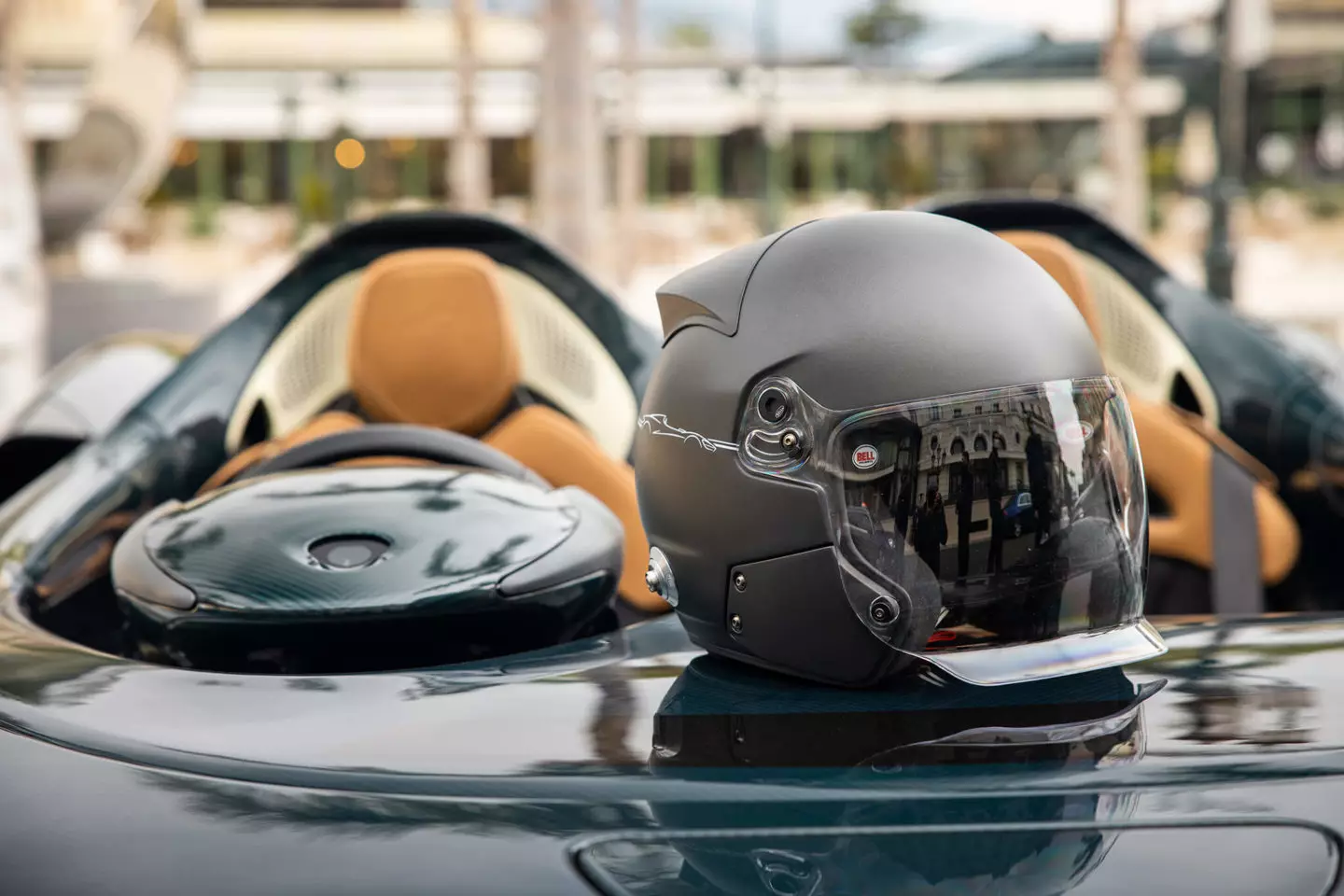
The standard mode is turned off, but if the driver turns it on (between 0 and 70 km/h) the deflector automatically goes up to 45 km/h (and falls below that speed), remaining active up to 200 km/h (maximum speed allowed with AAMS turned on). But without a helmet, above 100 km/h we started to feel somewhat reckless, even with the glasses with photochromic lenses with anodized aluminum frames (they cost 500 euros and are part of the car's standard equipment).
Once 200 km/h are reached, the deflector descends and re-enters the front hood (under which there is no mini-trunk), allowing the air to arrive with less obstruction to the engine for cooling purposes — and only the helmet developed with socks on with the Bell with full visor, but open at the front to avoid violently pushing your head to the side when the wind really gets too strong — allows you to go beyond that speed, but with more frenzy than on many motorbikes, no matter how hard you try to sink into it. Bank.
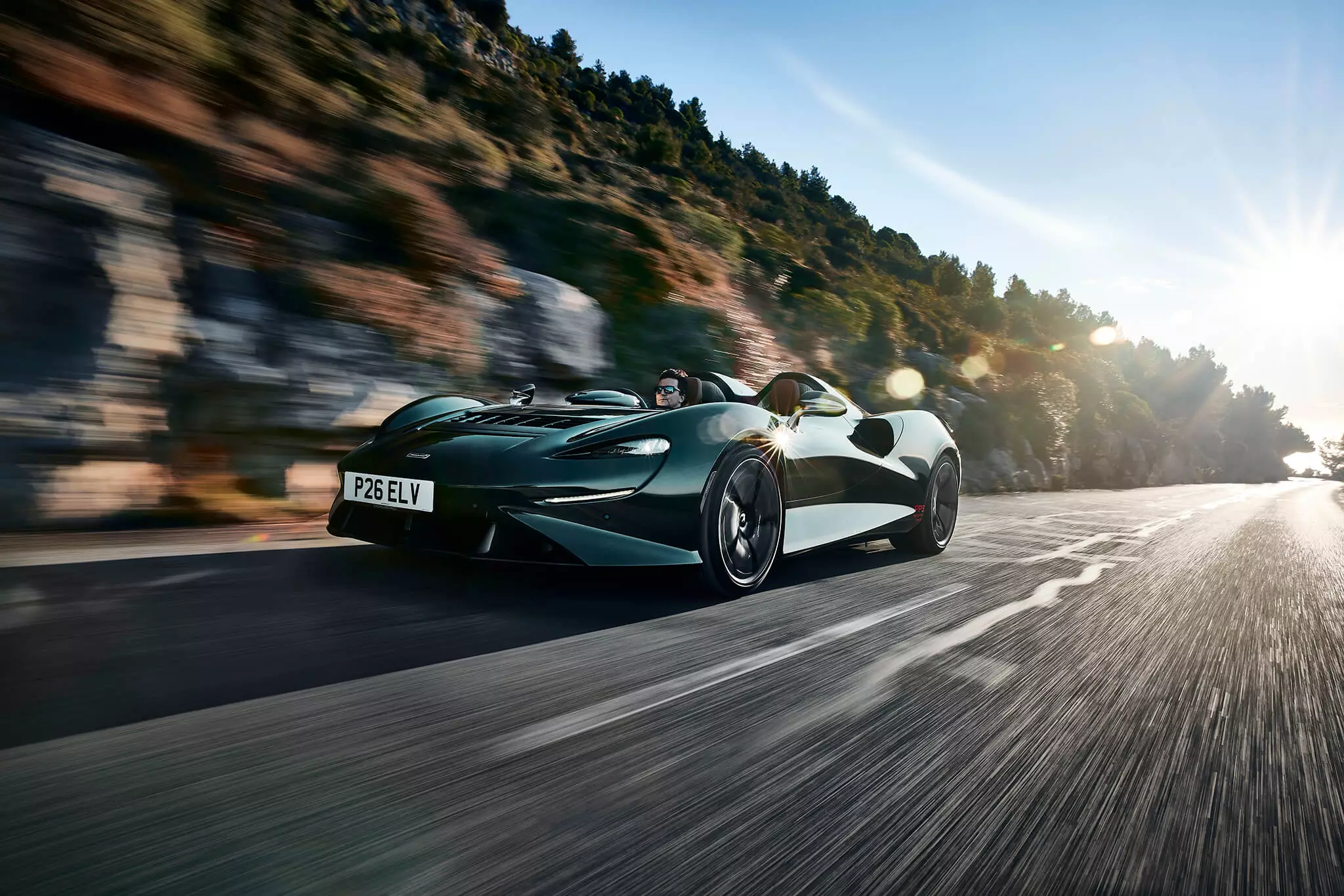
Along with the unusual exposure to the elements, the numbers of the performances we presented before, in the middle of ballistics territory (for example, less than a second up to 200 km/h than a supersonic Senna), already gave an idea of the effervescence of emotions that if they can live aboard the Elva.
And in this scenario dominated by sinuosities for all tastes and shapes, the straights become brief breaks in curves, giving little more than straightening the direction (with the usual surgical precision and quick reaction at McLaren) and preparing the entrance to the next turn.
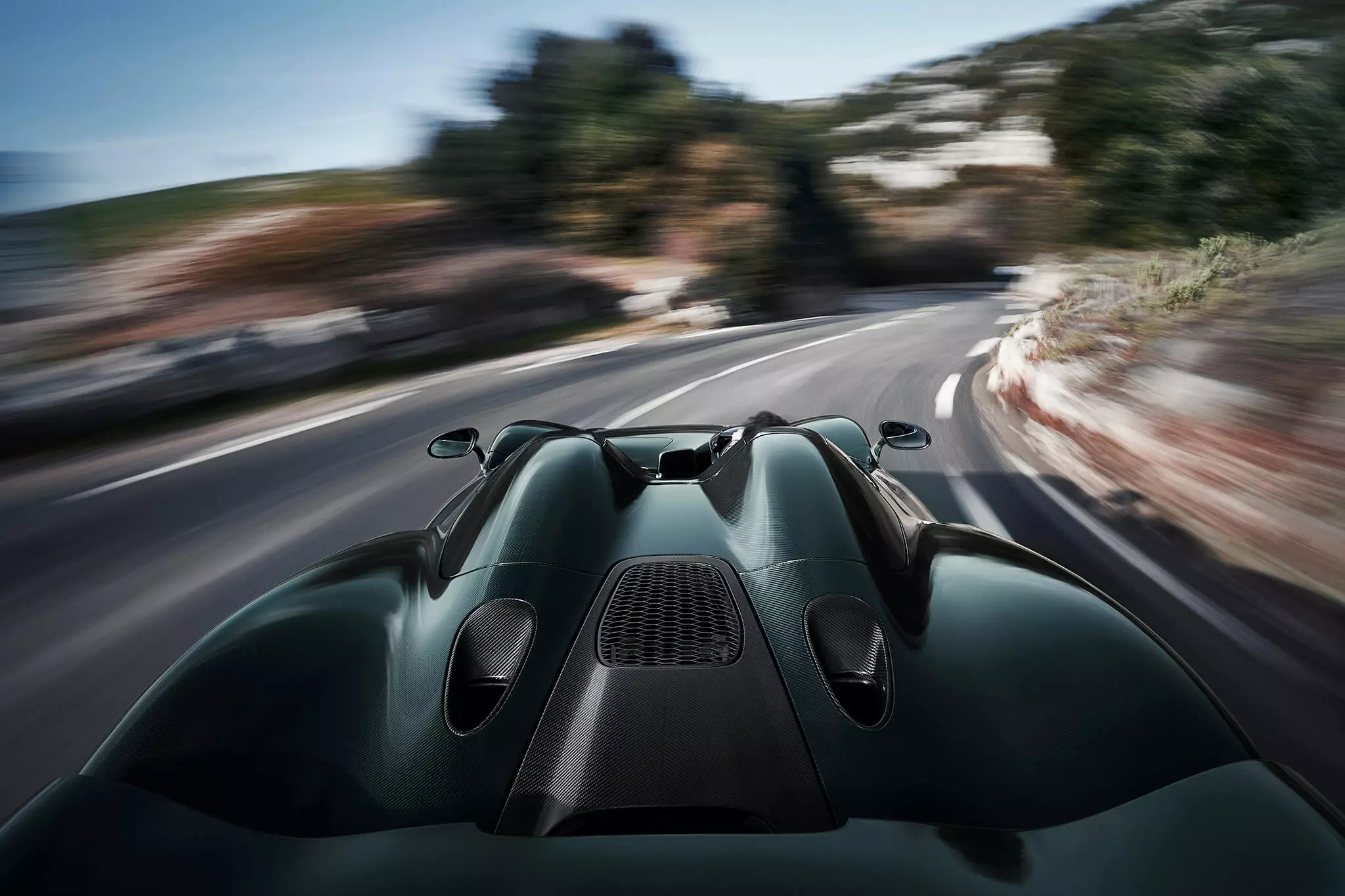
Fortunately, the chassis competence is above suspicion and is the kind that reassures us by being really there to help and not to cause additional difficulties to the challenges created by speed and physics. And everything happens in a natural and intuitive way: point to the curve, maintain the steering angle and exit by reinforcing the pressure on the accelerator pedal, but progressively so as not to cause instability in body movements, which in some of these narrow sections could generate some cold sweats.
Even though they were promptly dried by the air currents...
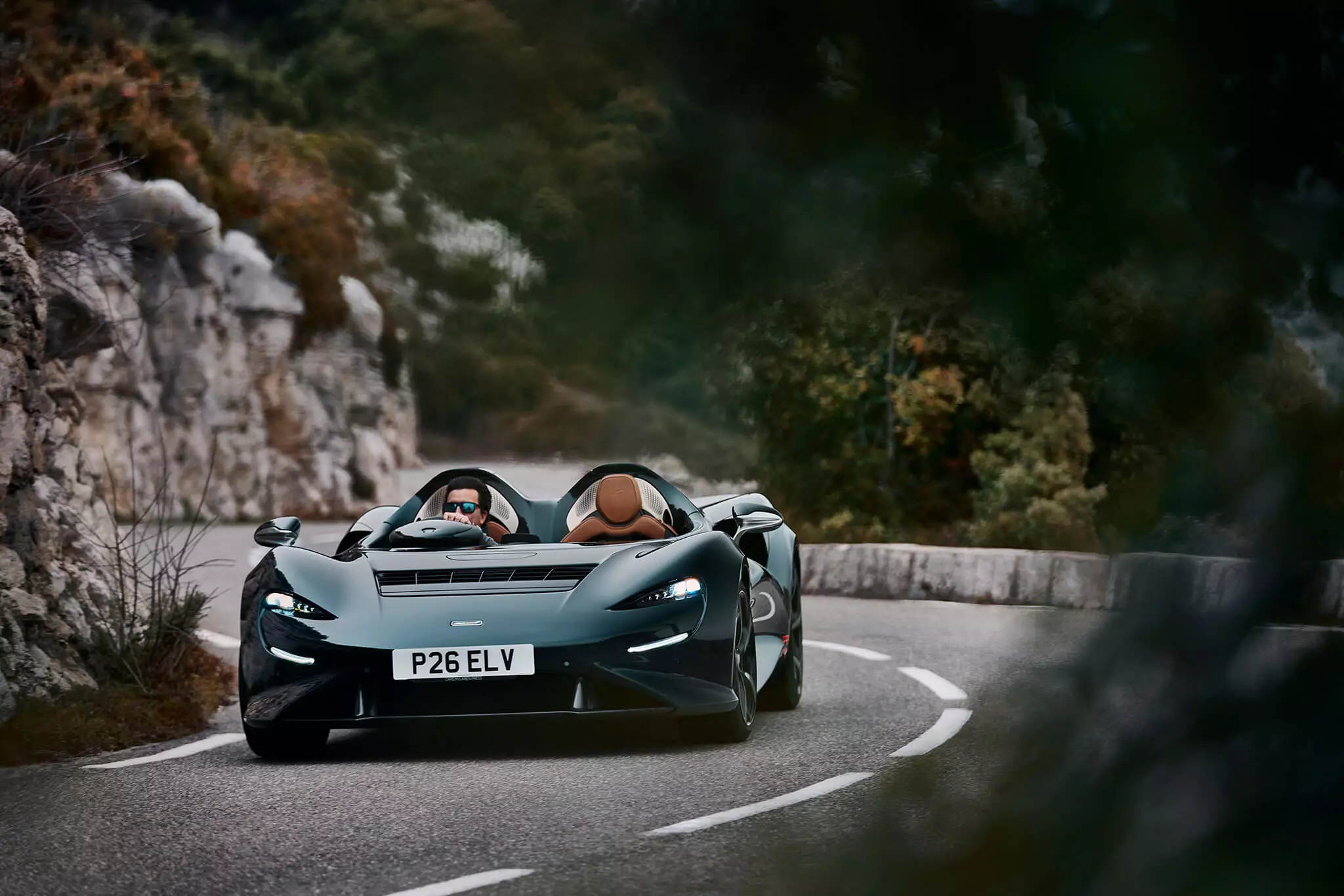
Outstanding accuracy
Before accessing the motorway, on the way back to Monaco, you could play with the different levels of stability control and realize that Elva also likes to have fun, letting go of the rear when we select the more “tolerant” program, but allowing corrections easy and intuitive, which solidify the driver's confidence with the accumulation of kilometers.
As impressive as the steering precision and the restraint of transverse body movements (especially in Sport mode and also thanks to the very low height of the Elva) is the ability to brake thanks to the most advanced system ever mounted on a "civilian" McLaren: healthy The same sedimented carbide-ceramic discs are used — which are characterized by better heat dissipation and therefore may have a smaller diameter — but here they use lighter titanium pistons in the brake calipers.
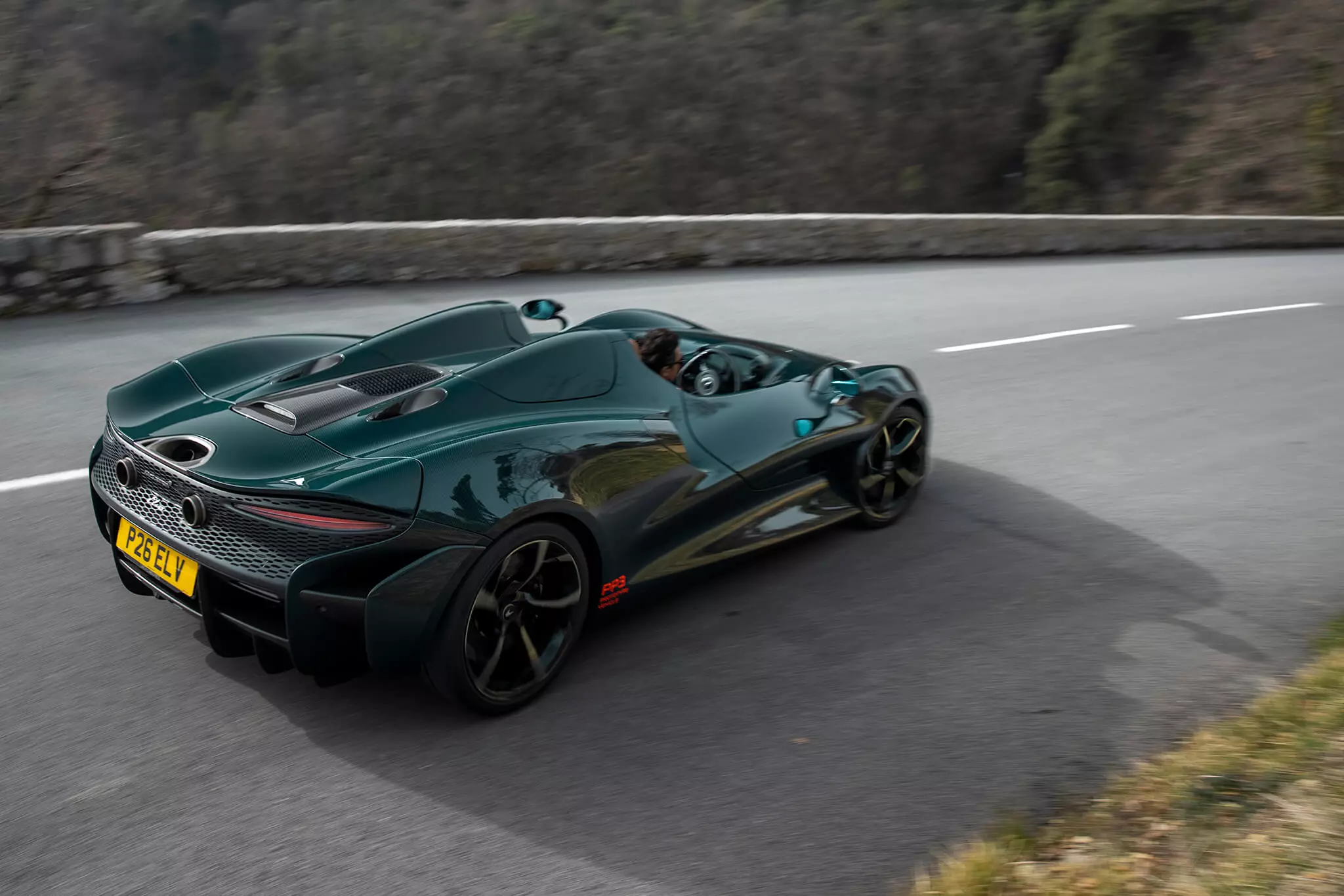
This results in braking distances almost as short as those of the Senna (a track car with authorization to reach the circuits on public roads on its “own foot”) which, despite being around 50 kg heavier, ends up having an incomparably aerodynamic arsenal bigger: the Elva can stop at just 30.5 m from 100 km/h (against the 29 m of the Senna) and at 112.5 m from 200 km/h (against 100 m).
If prudence had already advised putting the evolved helmet made by Bell's “tailoring” services, on a highway, it is essential to allow it to survive the hurricane generated in front of the car (we were told that even at 300 km/h they won't break the user's neck, a promise we have to trust because this test did not include track driving…).
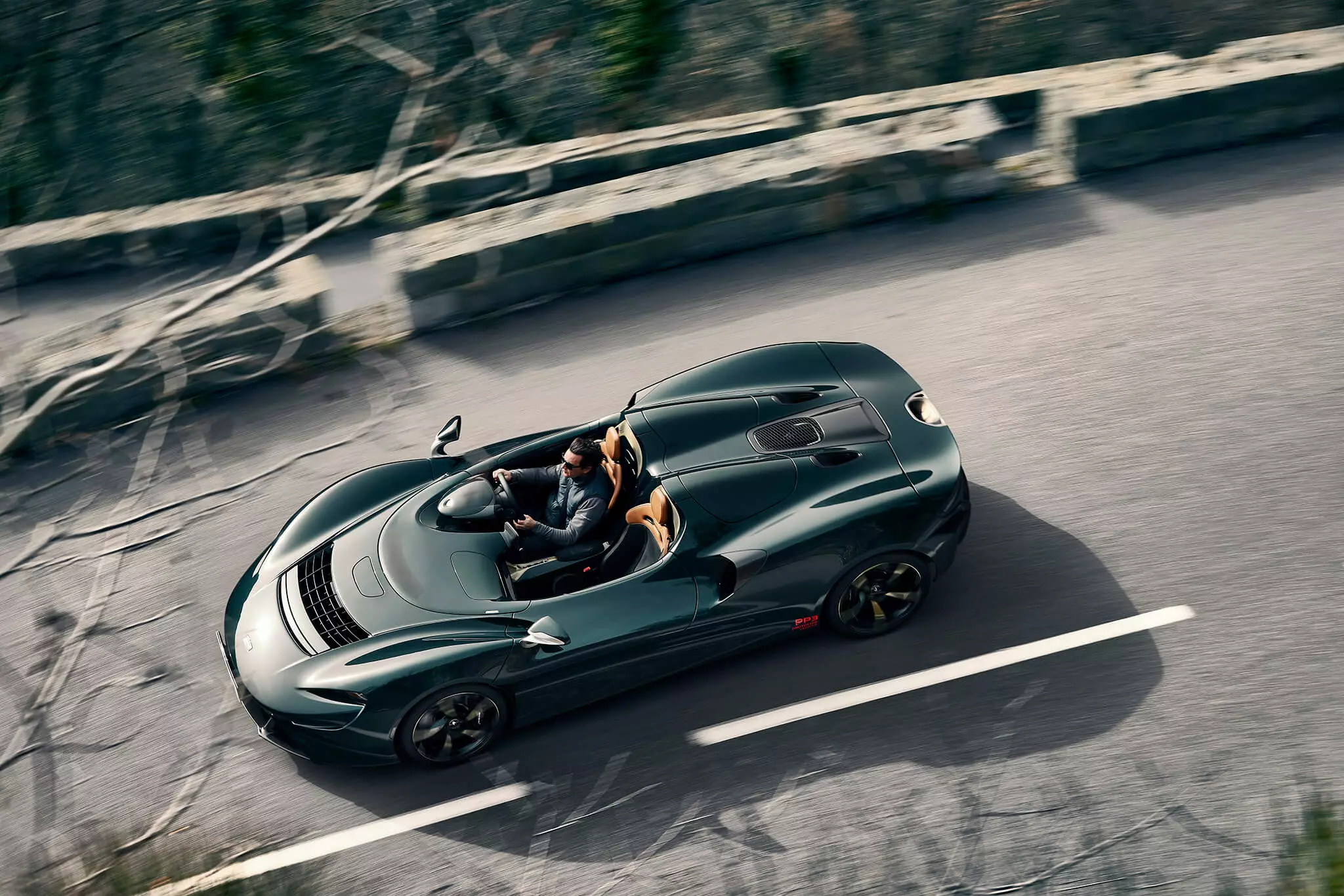
But there is also the additional help of such glasses similar to those used by the US Army Special Forces: “they are ultra-light, withstand impacts from shrapnel, gravel, etc. and the lens colors change according to the incidence of sunlight to better define the contrasts”, explains Andrew Kay, chief engineer at Elva.
With a helmet and (slightly) illegal speed, the tenebrous roar of the 4.0 l V8 (the same engine as the Senna) "shrinks" before the force of nature and the aerodynamic noises overwhelm everything, even if muzzled by the helmet.
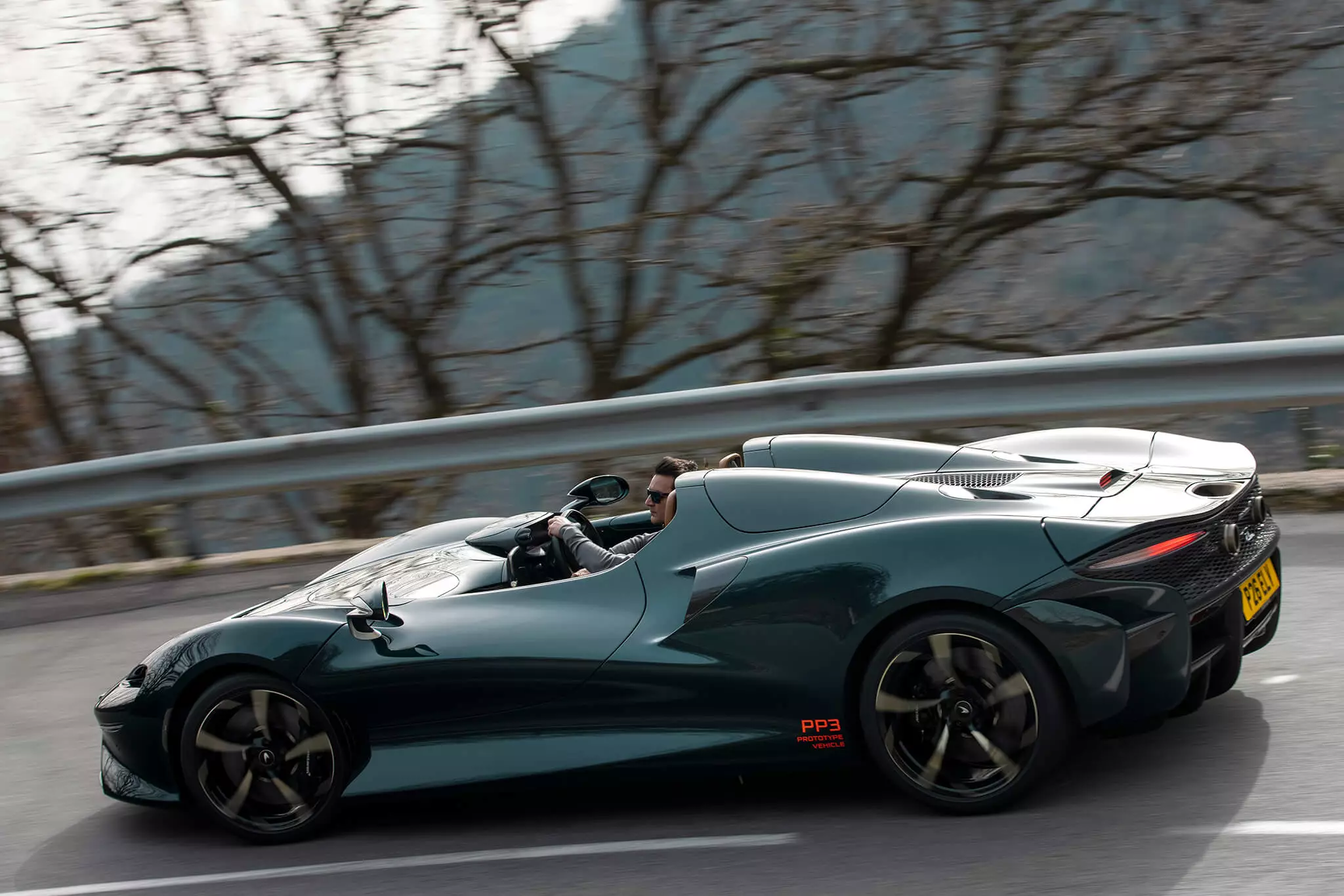
The seven-speed automatic transmission (double-clutch) loses the urgency it showed when changing gears in Sport mode, replacing it with smoothness once again in Comfort, but always with the speed appropriate to a hyper sports car of this caliber, still that your stage is not destined to be that of the circuits of speed with which your ancestor conquered the glory in the 60s at the hands of Bruce McLaren.
Technical specifications
| McLaren Elva | |
|---|---|
| Motor | |
| Position | Rear Center, Longitudinal |
| Architecture | 8 cylinders in V |
| Distribution | 2 ac/32 valves |
| Food | Injury indirect, 2 Turbochargers, Intercooler |
| Capacity | 3994 cm3 |
| power | 815 hp at 7500 rpm |
| Binary | 800 Nm at 5500 rpm |
| Streaming | |
| Traction | back |
| Gear box | 7 speed automatic transmission (double clutch). |
| Chassis | |
| Suspension | FR: Independent — double overlapping triangles; TR: Independent — double overlapping triangles |
| brakes | FR: Carbo-ceramic disks; TR: Carbo-Ceramic Discs |
| Direction | Electro-hydraulic assistance |
| Number of turns of the steering wheel | 2.5 |
| Dimensions and Capabilities | |
| Comp. x Width x Alt. | 4611 mm x 1944 mm x 1088 mm |
| Length between the axis | 2670 mm |
| suitcase capacity | 50 l |
| warehouse capacity | 72 l |
| Wheels | FR: 245/35 R19 (9jx19"); TR: 305/30 R20 (11jx20") |
| Weight | 1269 kg (1148 kg dry) |
| Provisions and consumption | |
| Maximum speed | 327 km/h |
| 0-100 km/h | 2.8s |
| 0-200 km/h | 6.8s |
| Braking 100 km/h-0 | 30.5 m |
| Braking 200 km/h-0 | 112.5 m |
| mixed consumption | 11.9 l/100 km |
| CO2 emissions | 277 g/km |
Authors: Joaquim Oliveira/Press Inform.
